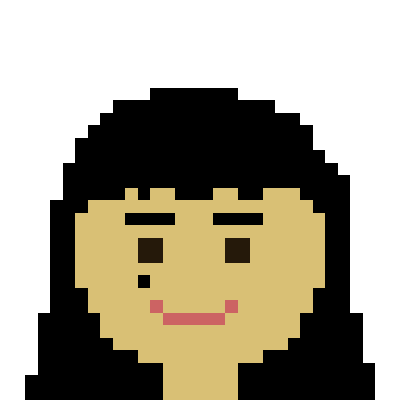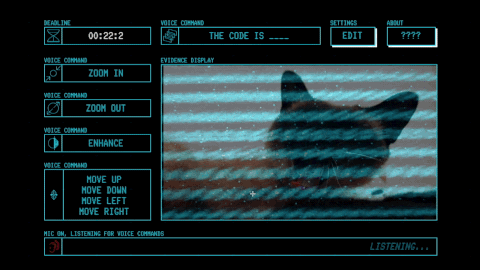
“Edge Cases” is a new series from The Believer featuring short interviews with artists who work with technology.
Our first subject is Nicole He, a Brooklyn-based artist and programmer. I originally came across Nicole’s work in 2015 while she was a student at NYU’s Interactive Telecommunication Program, and was blown away by her creativity and thoughtfulness. Her art and video games expertly dive into our relationships with the machines that have become so prominent in our lives.
—Maxwell Neely-Cohen
THE BELIEVER: How would you describe what you do to a kindergarten class?
NICOLE HE: I would say I make art and games with computers. Maybe it’s not a good answer because almost everything is made with computers.
BLVR: It’s a good answer. The first work of yours I think I remember seeing was the True Love Tinder Robot, which read how sweaty a user’s palms got when being shown tinder profiles, and swiped accordingly. How did that project come about?
NH: I did it at the end of my first semester at ITP. I was learning how to code, and it’s funny that years later in retrospect I see a through-line in my own work from that one project.
I was interested in exploring the idea of control in relationships between humans and computers. By putting your sweaty palms on the tinder robot you lose a sense of control over that experience. It’s like this being that exerts control over us and we exert control over it, but in a way that feels complicated. It feels like more than a tool, like it has some kind of agency over us, but we allow it to because we trust that it’s smarter than us.
It feels sort of creepy to have biometric input feed a computer that makes a very personal decision for you. But at the same time, we are used to it, it’s totally normal, because we have things like Fitbits that are very much doing the same thing. And I’m not saying that either is inherently evil or bad, I’m more interested in how we feel about it at that exact time.
BLVR: One thread in your work is projects that involve gardening, growing plants or life, like Garden Friends or Grow Slow. What attracts you to that?
NH: I think it’s the same reason a tamagotchi is appealing. It feels like a positive thing that you have a little bit of control over, there’s actions that you can take to encourage it to grow, but there’s also an element of surprise.
Grow slow in particular is a project about time and the internet, because it’s just pictures of a plant growing in my home office. But what’s interesting about it is it’s a slow project for the internet, because everything we make online is about efficiency and speed and getting attention. Yet Going Slow is only interesting over long periods of time, which is unusual for a digital project.
BLVR: I also feel like a lot of your work engages with creatures and animals, or even the computer as a living character itself, like ENHANCE.COMPUTER.
NH: Almost every one of my projects has some element of computer as a character. I think I enjoy making people engage with a computer as if it has a persona. As if it contains an entity, because that really brings out the strangeness of our feelings about computers. This is why I’m really into using voice technology, because it gives a persona to a computer in a more explicit way. There’s no way not to have the idea of some entity in your mind when you hear a voice. Having to actually engage in that way is again bringing up questions about power and control. Who in this interaction has more power or control, me or the computer? It’s sort of an unclear answer.

I’m not interested in art that’s like, “guess what guys, technology is bad.” I don’t want to make Black Mirror, where the moral of almost every story is that tech is worse than we thought it was, or doing terrible things to us and we’re absolute victims. I think it can be important for activists who are exposing all these biased algorithms. But I think it’s boring and mundane to make art where ultimately it’s just like “guess what, AI is evil.” Because it’s not true. When we use technology it’s a more complicated situation where it usually benefits us, or makes us happy, and living in that can be complicated. I try to explore that tension a little bit, to capture the nuance of the feelings that we have.
BLVR: What are you working on now?
NH: My next step is a sci-fi narrative voice controlled game produced by the National Film Board of Canada. I feel really lucky to have their support for this thing, which I’m explicitly calling a game.
BLVR: And how do you view your relationship to video games?
NH: Oh man. I’m glad you asked this because it’s something I’ve been thinking a lot about. I’m now shifting gears just a little bit, and explicitly trying to make video games, which feels different than whatever I was doing before. One thing I’ve been thinking a lot about is the world of creative tech and the world of indie games specifically, that distinction is all about framing and who your friends are. Any project could be in one or the other world.
I’m interested in making games right now because the creative tech community doesn’t have the same history of engagement or criticism that the games world has. And I think this comes back to the way that projects are funded. In creative technology, so much work is funded by Google, Microsoft, Apple. You get to use their technology to make something that showcases that technology, and that’s where the money is, in the end it’s ultimately just advertising. And people still make some really cool shit with that. But it’s different than the way people engage with a video game, where they’re willing to sit down for an hour to play something, and usually much longer. Can we create experiences, or interactions that people willingly engage with for those longer periods? I think we can if we call it a video game.
I want to engage that audience. And hopefully, and this is kind of scary, to actually get that level of critical feedback. The world of games has reviews sites and awards ceremonies, and angry commentators, the world of creative tech doesn’t have that. I’m curious to try. It’s definitely scary.
You can interact with and play Nicole’s work through her website, and follow her on twitter @nicolehe.




